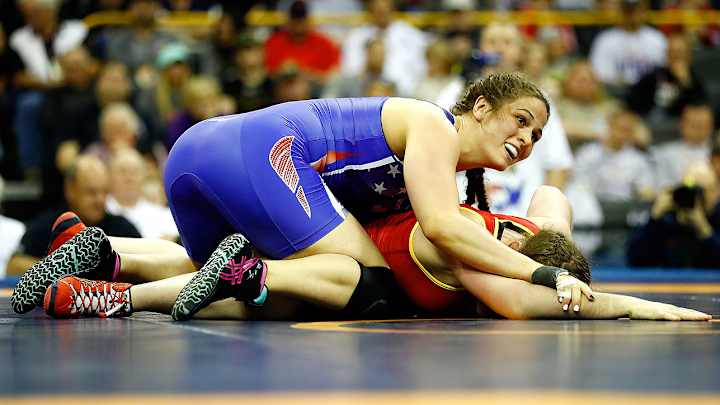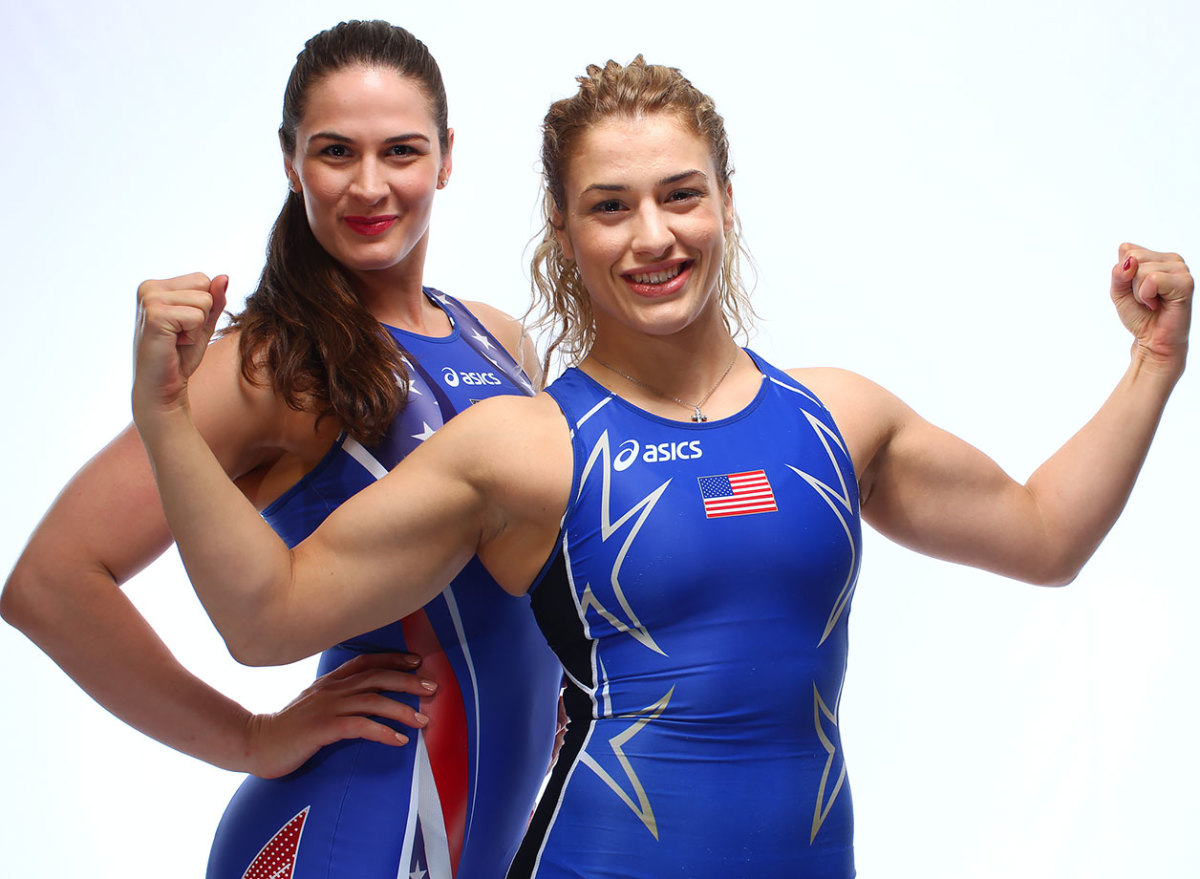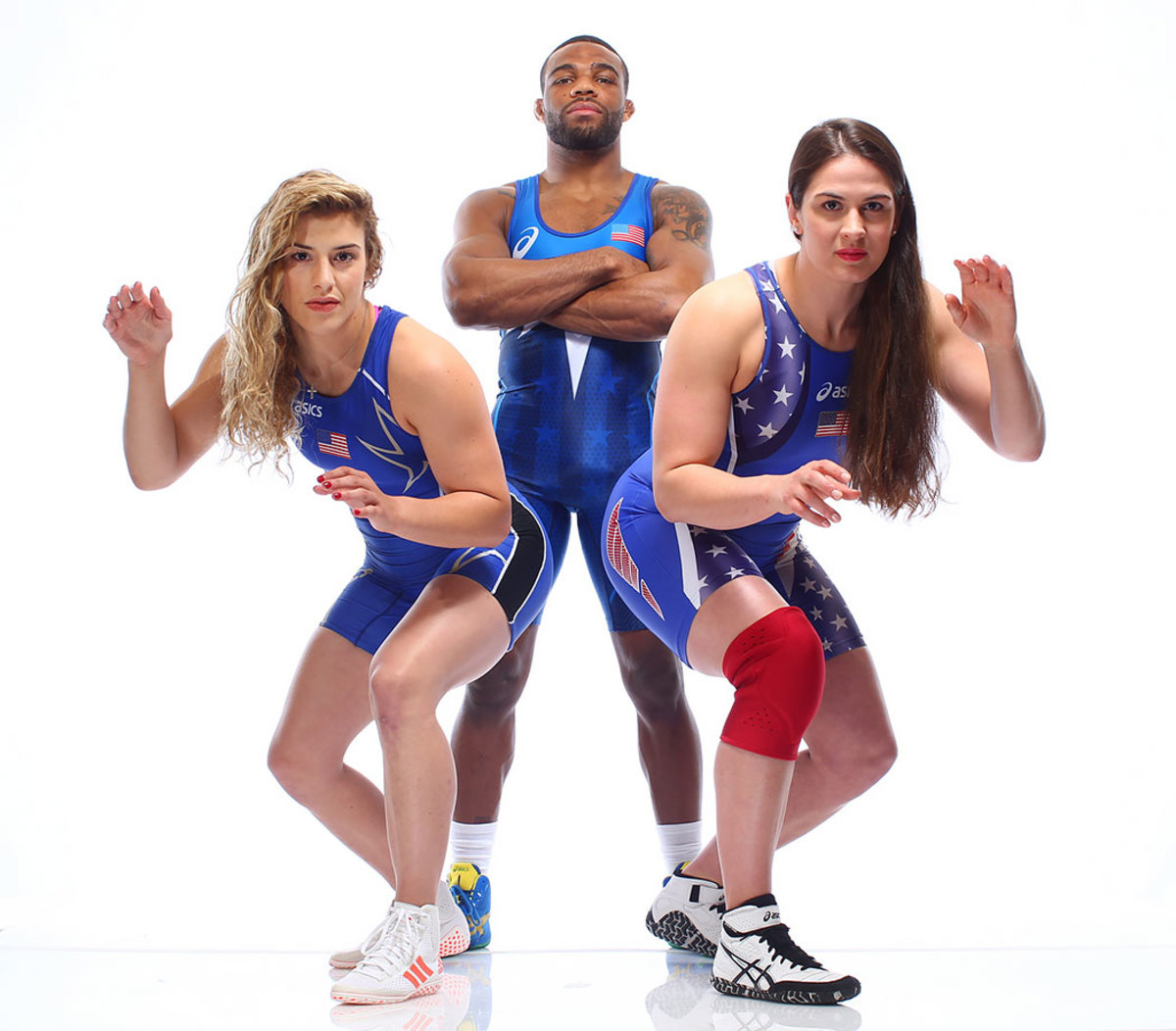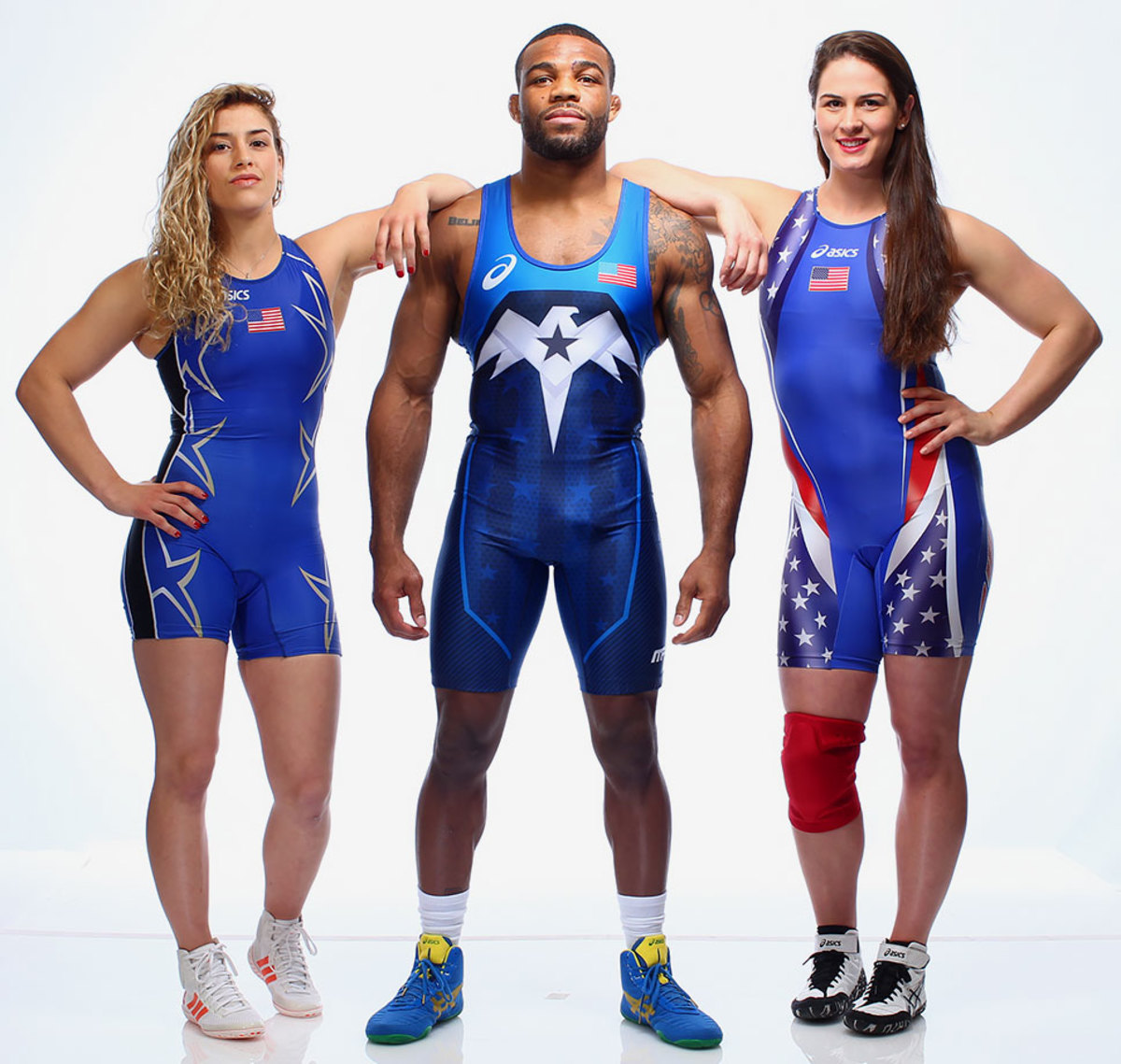Q&A with Adeline Gray: Talking Rio Olympics, wrestling with the boys and more

Unbeaten in 38 matches, U.S. wrestler Adeline Gray doesn’t look to end her winning streak anytime soon, especially when Olympic gold is on the line. And it’s not just any Olympic gold—Gray could become the first U.S. woman to win gold in wrestling.
After traveling to London as an alternate in 2012, the three-time world champion, who began wrestling when she was just six years old, is heavily favored in the 75kg weight class, and she competes in Rio on Thursday. SI.com caught up with Gray during a day of training at the United States Training Center in Colorado Springs, Colo. in February and in the SI.com offices soon after she qualified for the 2016 Olympics, where she discussed being the captain of her high school team, being a spokeswoman for female wrestling and more.
Interview has been edited for length and clarity.
SI: What’s your mindset heading into the Rio Olympics?
AG: It’s amazing it’s a breath of relief knowing that I can now focus on my goals and I don’t have to worry about checkpoints to hit, all I have to do is stay healthy so I can compete in Rio. I’ve been thinking about [gold] forever. It’s awesome to have the opportunity to be the first Olympic gold medalist and that definitely starts with visualizing yourself on top. I’m there. I’m excited. I’m looking forward to the opportunity to be on top.
SI: How did you get started in wrestling?
AG: I started wrestling when I was six years old. My dad, who was the youngest of seven boys, had four daughters and I think he looked at us like foreign objects like “what am I supposed to do with this?” [laughs]. He didn’t know dance or soccer, so he decided to teach us what he knew and loved. So he taught me wrestling. All my sisters tried it and the two oldest wrestled through high school and the other two ended up playing soccer. It was an amazing father/daughter bonding experience that I got to have my dad be my coach.
Iron Butterfly: Katie Ledecky fulfills her fate with five medals at Rio Olympics
SI:In high school, did you face adversity for being a girl on the boys team?
AG: My freshman year the coach knew who I was and I had a very supportive system. The athletes knew how to treat girls on the mat, and it was accepted that girls were going to be in the wrestling room. No one said anything because the coach mandated those rules. It’s amazing how influential a coach can be to young kids when they say to their athletes, “She’s going to be treated as an equal athlete when she steps on this mat. She’s going to earn her spot.” Same standards, same equality on both sides and it was accepted.
When I moved to a new school as a sophomore, the coach wasn’t overly thrilled with the idea of my sister and me on the team. These boys had never been on a team with a girl before and you could feel the hesitation with them. It was a younger team that had some growing to do, as wrestlers and in their maturity of dealing with a girl on the team. However I beat out one of the best guys on the team and I think that’s when I started to earn respect.
I started to take a leadership role. There was a group of five athletes who were able to teach moves and help the younger kids who didn’t have the experience we had. My junior year I was honored to be voted captain, because those boys swallowed their pride and accepted me as an athlete on the team. I’ve always been very vocal about the fact that I grew up wrestling boys and I wouldn’t be here today without that. So many boys had to step on the mat and have the courage to do that because it’s hard. It’s a lose/lose situation in a lot of standpoints to lose to a girl. They had the respect to treat me as an athlete when I got out there.
I’m a professional athlete and a female wrestler aiming to win an Olympic gold medal. It’s a pretty outstanding journey and process that I’m living right now and it would have never happened without those boys allowing me to be great on the mat and pushing me in those matches either though they were a little more athletic and stronger. It was definitely good for me to wrestle with boys.
Adeline Gray and Helen Maroulis
Adeline Gray and Helen Maroulis

Helen Maroulis, Jordan Burroughs and Adeline Gray

Helen Maroulis, Jordan Burroughs and Adeline Gray

SI:Are you comfortable being a spokeswoman for wrestling?
AG: Absolutely. It’s done amazing things for me. Just the idea of being in a non-mainstream sport never occurred to my parents when we were looking at sports for me to play and thinking ahead to possible scholarships. They would say “Ok you’ll play soccer. You’ll get a college scholarship, you’ll play four years of soccer, get your degree and you’ll be done.” My sister did that. It’s such a difference. She’s never been out of the country before, or had some of the experiences I have had.
I’m trying to give a complete picture of what it’s like being a woman professional athlete. Unlike men, we don’t have an entire NFL team to look up to. It’s sad that we don’t have those very standard women that we can look up to, but we’re starting to see that change. We have Serena Williams and the women professional soccer players.
My dream of winning an Olympic gold medal didn’t take picture until I got into this world and they threw it in my face so many times that I finally realized “Oh! I do want that!” When I was a freshman in college I thought I would go play college soccer, graduate and become a mom and work. There’s nothing wrong with that because that’s our society standards, but I didn’t have the dream of being a professional athlete when I was younger. I didn’t have the opportunity to dream about my life of being a world champion and what that means. It means being a role model, it means being a spokesperson.
Abbey D'Agostino, Nikki Hamblin exemplify Olympic spirit after falling in 5,000 meters
It’s great to discover new heights, but at the same time I just want that for the younger generation. I don’t want those girls falling short and having that extra spirit being for fight for something. I think that can inspire those girls to work harder in their classes and practices. Everything they do. Their eating habits, everything. That extra little bit of effort over a 10-year period can be a huge difference for young girls.
SI: What is a typical training day like for you at the Olympic Training Center?
AG: [Pulls out her calendar] We have two mat practices four times a week. I do four days of lifting a week. Mondays, Wednesdays and Fridays we do a cardio workout, a wrestling workout and an afternoon lift. Tuesdays we do a hard wrestling practice in the morning and then I lift in the afternoon. Thursday we do the mirror image of Tuesday. It’s very regimented. I live by my calendar. It tells me where I’m supposed to be all the time. Saturdays we usually have one or two workouts, and I have Sunday completely off. It all depends on if we have a competition coming up.
I try to do yoga when I can. We do a lot of stretching in our recovery workouts.
SI: You’re active on social media, do you think you use it more as self-promotion or a way to keep your friends and family updated on your life?
AG: Facebook is how my family sees my trips—I was in India for a month without a cell phone, so I would post photos onto Facebook so my family could see. Also for fans, it’s important for them to see those trips and what my overall message is for those young girls because when I was growing up, I really didn’t know that women’s wrestling was an option.
I love the feedback. It’s not a one-way street. You can share the high and lows with fans.
Olympic wrestler Adeline Gray talks training regimen, Rio and more
SI: You’ve traveled all over the world to compete, what has been your favorite stop?
AG: My favorite place has been China. It’s very different, and I like the experience of getting thrown into a new culture that’s so different. It was my first major foreign trips where I spent some actual time seeing everything. Usually when we travel it’s quick, maybe five days, in and out. You fly there, you sleep the whole day because you’re exhausted, you have two workouts, then you weigh in, you wrestle and then you leave the next day. So you don’t get to see anything, or eat a ton of the food because you’re cutting weight. It’s a business trip.
SI: You were in Rio not too long ago, what was that experience like for you?
AG: It was an Olympic test event and we got to check out the facilities and where we’re the athletes will be staying. We got to see what the layout would be, what the mats will feel like, what the humidity with wrestling feels like. The humidity causes sweat to be different, which causes the mat to get slick. We’ll bring humidifiers in to our wrestling room to replicate what it feels like with the extra humidity in the air as we get closer to the games.
SI: Are you concerned about the Zika virus in South America?
AG: It’s something that you need to consider if you are planning to have a family very soon and a lot of women are in that situation. Or like Jordan Burroughs whose wife is pregnant, I think it’s a huge issue. But I’ve adjusted my life to the Olympics and I can adjust it for two more years to deal with this. I got a few mosquito bites when I was in Rio, and hopefully I didn’t contract the virus.
SI: Have you thought of your plans after Rio?
AG: No. Nothing. I only have my sights set on August 18th. I have no idea what my life will entail after. I could retire. I could wrestle for another eight years. I don’t know and I’m not going to make any decisions until after I compete in Rio. I’ve sacrificed so much over the past three years and I just want to make sure I’m ready to compete.
